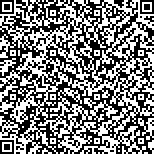| 本文已被:浏览 1970次 下载 918次 |

码上扫一扫! |
| 新型冠状病毒肺炎疫情期间非疫区发热门诊应对措施分析 |
| 胡珍丽1,李付琦1,叶强2,杨骅3,高白4,林欢1,顾雪辉2,陆建平5,白冲1*,蒲江2* |
|
|
(1. 海军军医大学(第二军医大学)长海医院呼吸与危重症医学科, 上海 200433;
2. 海军军医大学(第二军医大学)长海医院医务处, 上海 200433;
3. 海军军医大学(第二军医大学)长海医院门诊部, 上海 200433;
4. 海军军医大学(第二军医大学)长海医院信息科, 上海 200433;
5. 海军军医大学(第二军医大学)长海医院影像医学科, 上海 200433
*通信作者) |
|
| 摘要: |
| 目的 分析新型冠状病毒肺炎(COVID-19)疫情期间医院发热门诊各项措施调整后的诊疗数据,为非疫区COVID-19的防控工作积累经验。方法 收集整理非COVID-19疫区海军军医大学(第二军医大学)长海医院发热门诊2019年12月21日至2020年2月22日和2019年1月1日至2019年3月5日相关诊疗数据,并将其分为4组:A组(2020年COVID-19疫情期间)为2020年1月22日至2020年2月22日,B组(2020年COVID-19疫情前)为2019年12月21日至2020年1月21日,C组(2019年与A组同期)为2019年2月2日至2019年3月5日,D组(2019年与B组同期)为2019年1月1日至2019年2月1日。对收集的2020年及2019年发热门诊数据进行同比和环比分析。结果 2020年春节前后发热门诊诊疗总体情况与2019年同期相当。同比结果显示,2020年COVID-19疫情期间发热门诊每日就诊患者减少[(114.3±62.9)例vs(171.7±37.0)例],每位医师单次接诊时间延长[(11.7±1.8)min vs(6.5±1.3)min],但患者平均候诊时间减少[(7.5±0.6)min vs(22.8±1.5)min],差异均有统计学意义(P均<0.05)。环比结果显示,2020年COVID-19疫情期间每日就诊患者减少[(114.3±62.9)例vs(216.3±41.8)例],每位医师单次接诊时间延长[(11.7±1.8)min vs(5.6±0.8)min],患者平均候诊时间减少[(7.5±0.6)min vs(23.3±3.2)min],差异均有统计学意义(P均<0.05)。2020年COVID-19疫情期间发热门诊CT检查比例明显多于2019年同期[7.9%(292/3 658)vs 3.7%(206/5 493)],虽因加强防护措施延长了检查时间[(12.5±3.8)min vs(10.0±3.2)min],但患者获取CT检查报告时间明显减少[(10.6±2.5)min vs(58.4±9.6)min],差异均有统计学意义(P<0.05,P<0.01)。结论 COVID-19疫情期间非疫区发热门诊调整相关的流程和配置、配备专门CT机等举措可减少每位医务工作者每日接诊时间,提高诊疗效率,减少交叉感染。 |
| 关键词: 新型冠状病毒肺炎 发热门诊 防控 医院管理 |
| DOI:10.16781/j.0258-879x.2020.09.0970 |
| 投稿时间:2020-04-28修订日期:2020-06-26 |
| 基金项目:国家自然科学基金青年科学基金(81800018). |
|
| Fever clinic in non-epidemic area during coronavirus disease 2019 outbreak: an analysis of countermeasures |
| HU Zhen-li1,LI Fu-qi1,YE Qiang2,YANG Hua3,GAO Bai4,LIN Huan1,GU Xue-hui2,LU Jian-ping5,BAI Chong1*,PU Jiang2* |
(1. Department of Respiratory and Critical Care Medicine, Changhai Hospital, Naval Medical University(Second Military Medical University), Shanghai 200433, China;
2. Department of Medical Affairs, Changhai Hospital, Naval Medical University(Second Military Medical University), Shanghai 200433, China;
3. Department of Outpatient, Changhai Hospital, Naval Medical University(Second Military Medical University), Shanghai 200433, China;
4. Department of Information, Changhai Hospital, Naval Medical University(Second Military Medical University), Shanghai 200433, China;
5. Department of Radiology, Changhai Hospital, Naval Medical University(Second Military Medical University), Shanghai 200433, China
*Corresponding authors) |
| Abstract: |
| Objective To analyze the diagnosis and treatment data after the adjustment of various measures in the hospital fever clinic during the coronavirus disease 2019 (COVID-19) outbreak, so as to provide experience for the prevention and control of COVID-19 in non-epidemic areas. Methods We collected the diagnosis and treatment data from the fever clinic of Changhai Hospital of Naval Medical University (Second Military Medical University) in non-epidemic area from Dec. 21, 2019 to Feb. 22, 2020 and Jan. 1 to Mar. 5, 2019, and divided them into four groups: group A (during the 2020 COVID-19 epidemic), from Jan. 22 to Feb. 22, 2020; group B (before the COVID-19 epidemic), from Dec. 21, 2019 to Jan. 21, 2020; group C (in the same period as group A in 2019), from Feb. 2 to Mar. 5, 2019; and group D (in the same period as group B in 2019), from Jan. 1 to Feb. 1, 2019. Year-on-year and month-on-month comparisons of the above data were conducted. Results The overall situation of the fever clinic around the Spring Festival in 2020 was similar to that of the same period in 2019. The year-on-year comparison results showed that during the COVID-19 epidemic, the number of daily patients in the fever clinic was significantly decreased ([114.3±62.9] cases vs [171.7±37.0] cases), the single consultation time of each physician was prolonged ([11.7±1.8] min vs [6.5±1.3] min), but the average waiting time of patients was decreased ([7.5±0.6] min vs [22.8±1.5] min) (all P<0.05). The month-on-month comparison results indicated that the number of daily patients in the fever clinic was significantly decreased during the COVID-19 epidemic ([114.3±62.9] cases vs [216.3±41.8] cases), the single consultation time of each physician was prolonged ([11.7±1.8] min vs [5.6±0.8] min), but the average waiting time of patients was decreased ([7.5±0.6] min vs [23.3±3.2] min) (all P<0.05). The proportion of computed tomography (CT) examination during the 2020 COVID-19 epidemic was significantly higher than that in the same period of 2019 (7.9% [292/3 658] vs 3.7% [206/5 493]). Although the examination time was prolonged due to strengthened protective measures ([12.5±3.8] min vs [10.0±3.2] min) (P<0.05), the time for patients to have the CT examination report was significantly shortened ([10.6±2.5] min vs [58.4±9.6] min) (P<0.01). Conclusion During the COVID-19 epidemic, measures such as adjusting the relevant procedures of the fever clinic and equipping special CT machine in non-epidemic area can reduce the daily consultation time of physicians, improving the diagnosis and treatment efficiency and reducing cross infection. |
| Key words: coronavirus disease 2019 fever clinic prevention and control hospital administration |
.jpg)
.jpg)